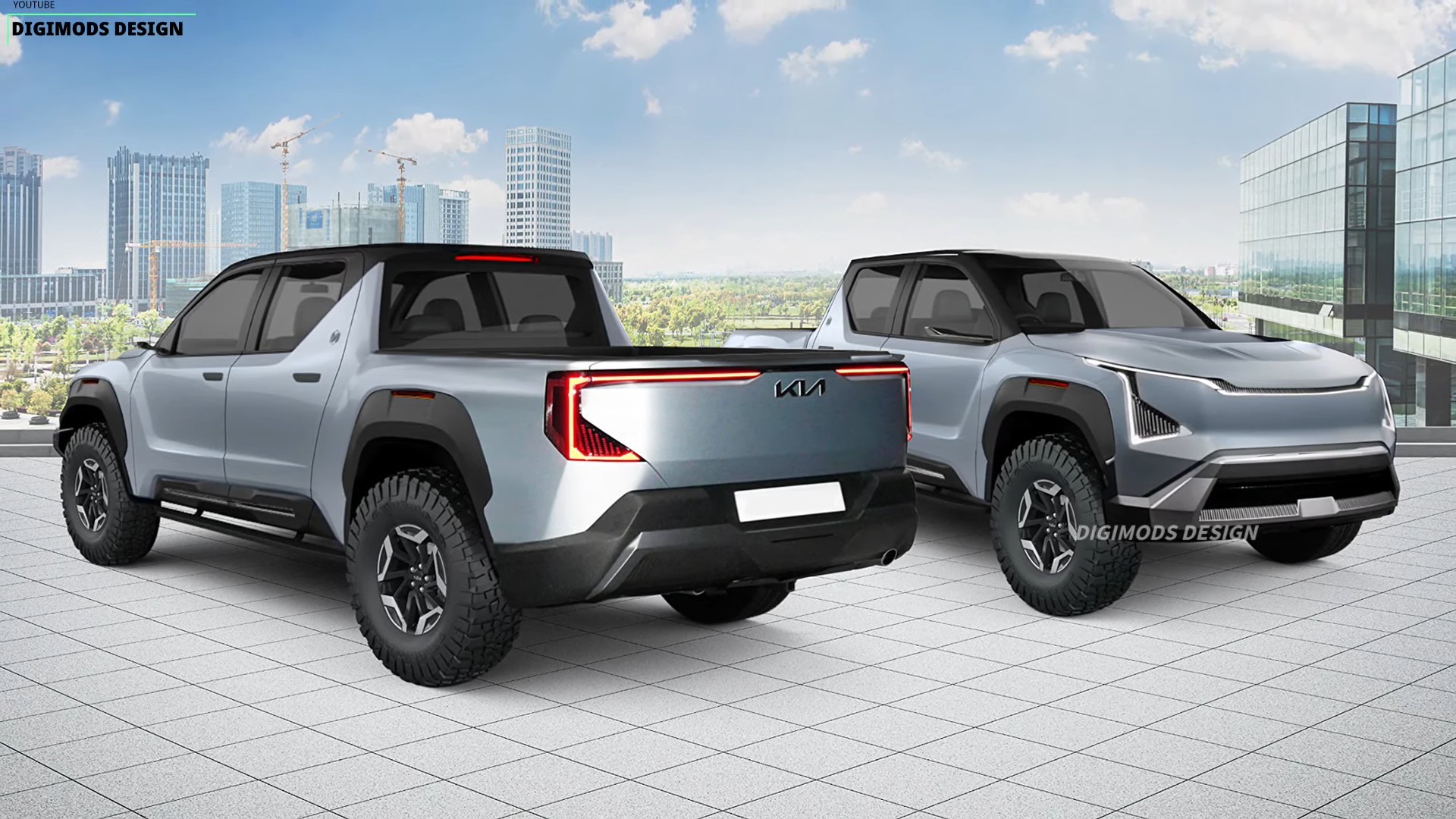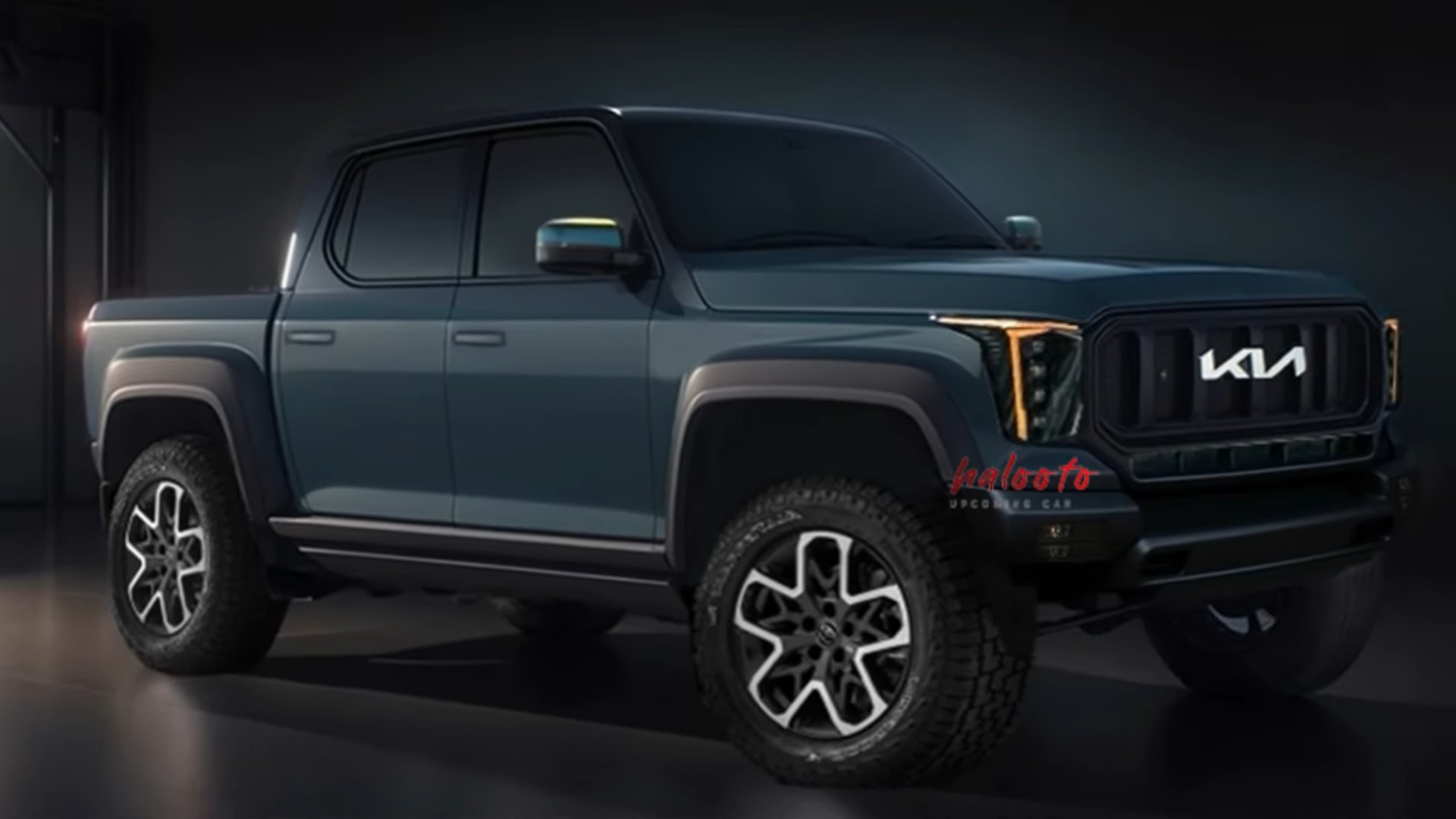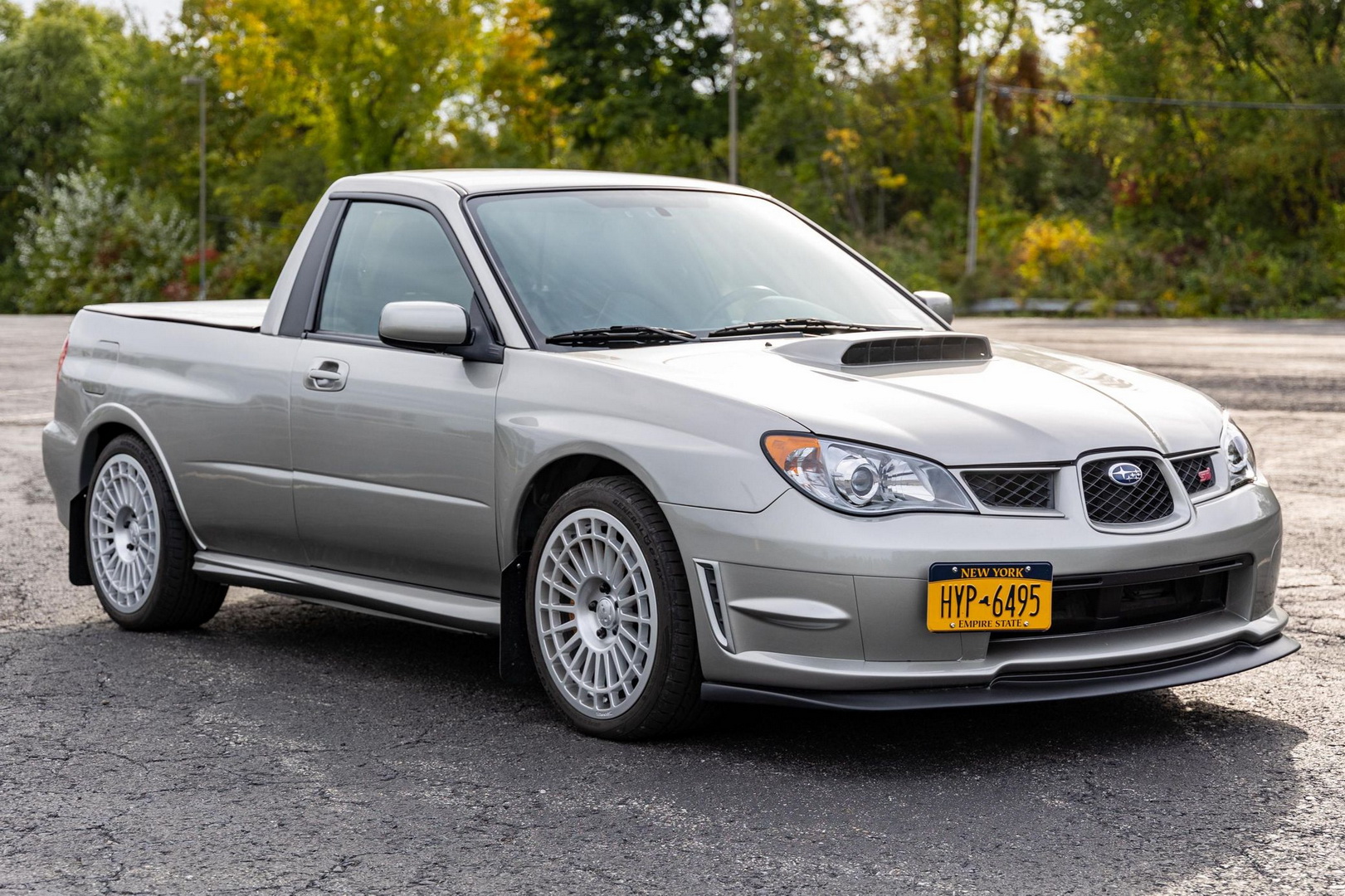Pickup Trucks For Lease: Your Comprehensive Guide to Driving Smarter pickup.truckstrend.com
In an era where flexibility, budget management, and access to the latest technology are paramount, the concept of leasing a vehicle has surged in popularity. For many, this once niche option has become a mainstream choice, and nowhere is its appeal more evident than in the robust and versatile world of pickup trucks. "Pickup Trucks For Lease" represents a growing trend, offering individuals and businesses alike a strategic way to get behind the wheel of powerful, capable vehicles without the long-term commitment and depreciation concerns associated with traditional ownership.
This comprehensive guide will delve deep into the world of pickup truck leasing, exploring its benefits, the crucial considerations involved, a step-by-step process for securing your lease, and practical advice to ensure a successful experience. Whether you need a truck for daily commutes, weekend adventures, or demanding work, understanding the nuances of leasing can unlock a smart, efficient path to your next pickup.
Pickup Trucks For Lease: Your Comprehensive Guide to Driving Smarter
What is Pickup Truck Leasing?
At its core, leasing a pickup truck is akin to a long-term rental agreement. Instead of purchasing the vehicle outright or financing its full price, you pay for the depreciation of the truck over a specific period, typically 24 to 48 months, plus a money factor (interest rate). You don’t own the truck at the end of the lease term; rather, you have the option to return it, purchase it, or lease a new one.
This model differs significantly from buying. When you buy, you own the asset and build equity (or lose it through depreciation). When you lease, you’re essentially paying for the use of the vehicle for a defined period, making it an attractive option for those who prefer lower monthly payments, desire frequent vehicle upgrades, or require a vehicle for business purposes where tax advantages can be significant.
Why Lease a Pickup Truck? Benefits Unpacked
Leasing a pickup truck offers a compelling array of advantages that make it a financially astute and practical choice for many drivers.
- Lower Monthly Payments: This is often the most significant draw. Because you’re only paying for the depreciation of the truck during your lease term, not its full purchase price, monthly lease payments are typically considerably lower than loan payments for the same vehicle. This frees up cash flow for other expenses or investments.
- Access to New Models & Technology: Leasing allows you to drive a brand-new truck every few years, often with the latest safety features, infotainment systems, and engine technologies. This is ideal for those who enjoy staying current with automotive innovations without the hassle of selling an older vehicle.
- Manufacturer Warranty Coverage: Lease terms are usually structured to align with the manufacturer’s bumper-to-bumper warranty. This means that for the entire duration of your lease, most repairs and maintenance issues are covered, significantly reducing unexpected out-of-pocket expenses.
- Reduced Maintenance Hassle: Since you’re driving a new vehicle, major maintenance issues are rare. Routine maintenance is still required, but you avoid the costlier repairs that often come with older, high-mileage vehicles.
- Potential Tax Advantages (for Businesses): For businesses, leasing can offer significant tax benefits. Lease payments can often be deducted as a business expense, and it avoids tying up capital in a depreciating asset. Consult with a tax professional for specific advice tailored to your situation.
- Flexibility at Lease End: At the end of your lease term, you have several clear options:
- Return the vehicle: Simply hand back the keys (assuming it meets wear-and-tear guidelines and mileage limits).
- Lease a new vehicle: Upgrade to the latest model with a new lease agreement.
- Purchase the vehicle: If you love the truck and the buyout price is favorable, you can buy it outright.

- Less Hassle with Resale: When you lease, you avoid the private sale process or trade-in negotiations that come with ownership. Simply return the truck at the end of the term, eliminating the stress and time commitment of selling.


Key Considerations Before Leasing a Pickup Truck
While the benefits are attractive, leasing isn’t without its specific considerations. Understanding these points upfront is crucial for a smooth and satisfying experience.
- Mileage Limits: Lease agreements come with strict annual mileage caps (e.g., 10,000, 12,000, or 15,000 miles per year). Exceeding these limits incurs per-mile penalties, which can quickly add up. Be realistic about your driving habits.
- Excessive Wear and Tear: While normal wear and tear is expected, anything beyond that (e.g., large dents, significant scratches, torn upholstery, neglected maintenance) will result in charges at lease end. Keep the truck in good condition.
- Early Termination Fees: Deciding to end your lease before the agreed-upon term can be very expensive. The fees can often amount to several months of payments, making it financially unviable unless absolutely necessary.
- Insurance Requirements: Lease agreements typically require comprehensive insurance coverage with specific liability limits, often higher than what you might carry for an owned vehicle. Factor these potentially higher premiums into your budget.
- Credit Score Impact: A good to excellent credit score is usually required to qualify for the best lease rates. A lower score might still allow you to lease, but with a higher money factor (interest rate).
- Upfront Costs: While monthly payments are lower, you’ll still have some upfront costs, which can include:
- First month’s payment: Required at signing.
- Down payment (capitalized cost reduction): While not always necessary, a down payment can lower your monthly payments.
- Acquisition fee: A fee charged by the leasing company for arranging the lease.
- Documentation fees, taxes, and registration: Standard fees associated with any vehicle acquisition.
- No Equity Building: Unlike buying, you don’t build equity in a leased vehicle. Your payments go towards the use of the truck, not its ownership.
How to Lease a Pickup Truck: A Step-by-Step Guide
Leasing a pickup truck might seem complex, but breaking it down into manageable steps makes the process clear and straightforward.
-
Determine Your Needs & Budget:
- Capability: What will you use the truck for? Hauling, towing, off-roading, daily commuting? This dictates cab size, bed length, engine type, and trim level.
- Budget: How much can you comfortably afford for monthly payments, insurance, and fuel? Remember to factor in potential mileage overage charges.
- Mileage: Be honest about your annual driving habits to choose an appropriate mileage limit.
-
Research Models & Dealerships:
- Popular Options: Look into popular leased trucks like the Ford F-150, Ram 1500, Chevrolet Silverado, Toyota Tacoma, GMC Sierra, and Nissan Frontier. Each has its strengths.
- Dealerships: Contact several dealerships, both local and online, to compare lease offers. Don’t be afraid to pit them against each other for the best deal.
-
Understand Lease Terminology & Key Numbers:
- MSRP (Manufacturer’s Suggested Retail Price): The sticker price.
- Capitalized Cost (Cap Cost): This is the negotiated price of the truck you’re leasing. Aim to negotiate this down, just as you would a purchase price, as a lower cap cost directly reduces your monthly payments.
- Residual Value: The estimated value of the truck at the end of the lease term. A higher residual value (as a percentage of MSRP) means lower depreciation and, therefore, lower monthly payments.
- Money Factor (Lease Factor): This is essentially the interest rate on your lease, expressed as a very small decimal (e.g., 0.0025). To convert it to an APR, multiply by 2400 (0.0025 x 2400 = 6% APR). A lower money factor is better.
- Lease Term: The duration of the lease (e.g., 24, 36, or 48 months). Shorter terms mean higher payments but more frequent upgrades; longer terms mean lower payments but less flexibility.
-
Negotiate Your Deal:
- Negotiate the Cap Cost: Treat it like negotiating the purchase price. Get the best possible "selling price" for the truck.
- Inquire about the Money Factor: Ask if it’s negotiable or if there are promotional rates available.
- Review Residual Value: Ensure it aligns with market expectations (though this is typically set by the leasing company).
- Consider a Down Payment: A down payment (capitalized cost reduction) can lower monthly payments, but if the truck is totaled, you lose that money. Often, putting down just the first month’s payment and fees is recommended.
-
Read the Lease Contract Carefully:
- Before signing, thoroughly review every clause. Pay close attention to:
- Monthly payment and total cost
- Lease term and mileage limits
- Excess wear and tear policy
- Early termination penalties
- End-of-lease options and fees (disposition fee, purchase option price)
- Don’t hesitate to ask questions about anything you don’t understand.
- Before signing, thoroughly review every clause. Pay close attention to:
-
Maintain the Vehicle During the Lease:
- Follow the manufacturer’s recommended maintenance schedule. Keep detailed records.
- Address any minor dents or scratches promptly to avoid end-of-lease charges.
- Keep the interior clean and well-maintained.
-
Understand End-of-Lease Options:
- Return: Schedule a pre-inspection to identify potential charges. Clean the vehicle thoroughly.
- Buy: If you want to keep the truck, you’ll pay the residual value plus any purchase option fees.
- Lease a new one: Most common choice. The dealership will help you transition.
Popular Pickup Truck Models Available for Lease
Virtually all major truck manufacturers offer compelling lease programs. Here are some of the most frequently leased models, known for their versatility and robust capabilities:
- Ford F-150: America’s best-selling truck for decades, known for its wide range of configurations, powerful engine options (including hybrid), and advanced technology.
- Ram 1500: Renowned for its luxurious interiors, comfortable ride, and innovative features like the multi-function tailgate and RamBox cargo management system.
- Chevrolet Silverado 1500 / GMC Sierra 1500: GM’s formidable duo offers strong towing capabilities, various engine choices, and distinct styling between the two brands.
- Toyota Tacoma: A top choice in the mid-size truck segment, known for its legendary reliability, off-road prowess, and strong resale value (which often translates to favorable lease residuals).
- Nissan Frontier: A refreshed contender in the mid-size market, offering a modern design and a capable V6 engine.
Leasing vs. Buying: Which is Right for You?
The decision between leasing and buying a pickup truck depends heavily on your lifestyle, financial situation, and driving habits.
| Feature | Leasing | Buying |
|---|---|---|
| Ownership | No (you pay for usage) | Yes (you own the asset) |
| Monthly Payment | Typically Lower | Typically Higher |
| Upfront Costs | Often Lower (first payment, fees) | Often Higher (down payment, taxes, fees) |
| Mileage Limits | Strict (penalties for overages) | Unlimited |
| Maintenance | Covered by warranty for most of lease | Responsible for all maintenance and repairs |
| Vehicle Upgrades | Easy to get a new vehicle every few years | Keep vehicle for longer, sell/trade yourself |
| Customization | Limited (must be reversible without damage) | Unlimited |
| End of Term | Return, buy, or lease new | Sell, trade-in, or keep |
| Equity | None | Build equity (or depreciation) |
| Long-Term Cost | Can be more expensive over many years of leasing new vehicles | Can be cheaper if kept for many years after payoff |
Lease if you:
- Drive a predictable number of miles annually.
- Prefer lower monthly payments.
- Like driving new vehicles with the latest technology.
- Want hassle-free vehicle transitions.
- Are a business seeking potential tax advantages.
Buy if you:
- Drive high mileage annually.
- Want to own your vehicle long-term.
- Plan to customize your truck extensively.
- Prefer to avoid mileage limits and wear-and-tear rules.
- Want to build equity in an asset.
Tips for a Successful Pickup Truck Lease
To maximize the benefits and avoid pitfalls, keep these practical tips in mind:
- Know Your Mileage Needs: This is paramount. Overestimating means paying for miles you won’t use; underestimating means costly penalties.
- Maintain the Vehicle Meticulously: Adhere to the service schedule and keep the truck clean. Address minor damage promptly; a small repair now could save a larger charge later.
- Understand All Fees: Get a clear breakdown of acquisition fees, disposition fees, excess wear-and-tear charges, and any other potential costs.
- Shop Around: Don’t just accept the first offer. Compare quotes from multiple dealerships and even different manufacturers. Lease rates and incentives vary significantly.
- Negotiate the Cap Cost: This is your primary point of negotiation. The lower the "selling price" of the truck, the lower your monthly payments will be.
- Consider a Shorter Lease Term: If you’re unsure about your long-term needs or truck preferences, a 24- or 36-month lease offers more flexibility than a 48-month one, albeit with slightly higher monthly payments.
- Get GAP Insurance: Guaranteed Asset Protection (GAP) insurance covers the difference between what you owe on the lease and what your insurance company will pay if the truck is stolen or totaled. It’s often required by the leasing company and is a small price for significant peace of mind.
Illustrative Pickup Truck Lease Price Table (Example)
Please Note: This table provides illustrative examples only. Actual lease prices vary dramatically based on location, current incentives, your credit score, specific trim levels, optional features, negotiation, and market conditions. Always get a personalized quote from a dealership.
| Model | Trim Level (Example) | Lease Term (Months) | Annual Mileage Limit | Estimated Monthly Payment (Example) | Estimated Down Payment (Example) | Estimated Residual Value (of MSRP) |
|---|---|---|---|---|---|---|
| Ford F-150 | XLT SuperCrew | 36 | 12,000 miles | $429 | $2,999 | 60% |
| Ram 1500 | Big Horn Quad Cab | 36 | 10,000 miles | $399 | $3,499 | 58% |
| Chevy Silverado | LT Double Cab | 39 | 12,000 miles | $419 | $2,799 | 59% |
| Toyota Tacoma | SR5 Double Cab | 36 | 12,000 miles | $369 | $2,499 | 65% |
| GMC Sierra 1500 | SLE Crew Cab | 39 | 10,000 miles | $449 | $3,999 | 57% |
| Nissan Frontier | SV Crew Cab | 24 | 10,000 miles | $329 | $1,999 | 62% |
These figures are for demonstration purposes. Always verify all terms and conditions with a qualified dealership.
Frequently Asked Questions (FAQ) About Pickup Trucks For Lease
Q1: Is it cheaper to lease or buy a pickup truck?
A1: In terms of monthly payments, leasing is almost always cheaper. However, in the long run, if you keep a purchased vehicle for many years after paying it off, buying can be cheaper overall. Leasing is about lower short-term costs and access to new vehicles; buying is about ownership and long-term value.
Q2: What happens if I go over my mileage limit on a leased truck?
A2: You will be charged a per-mile penalty, typically ranging from $0.15 to $0.30 for every mile over your limit. These charges can add up quickly, so accurately estimating your mileage is crucial.
Q3: Can I customize a leased pickup truck?
A3: Minor, easily reversible customizations (like floor mats or seat covers) are generally fine. Major modifications like lift kits, permanent bed liners, or significant paint changes are usually prohibited or will incur charges at lease end for restoration. Always check your lease agreement.
Q4: What is a "money factor" and how does it relate to the interest rate?
A4: The money factor is the interest rate equivalent in a lease, expressed as a small decimal (e.g., 0.0025). To convert it to an approximate annual percentage rate (APR), multiply it by 2400. A lower money factor means lower finance charges on your lease.
Q5: Can I buy my leased pickup truck at the end of the term?
A5: Yes, most lease agreements include a "purchase option" price, which is typically the residual value of the truck plus any purchase option fees. If the market value of the truck is higher than the residual value, it can be a good deal to buy it.
Q6: What is "excess wear and tear"?
A6: This refers to damage to the vehicle that goes beyond normal, expected use. Examples include large dents, deep scratches, cracked windshields, torn upholstery, non-functioning features, or significant tire wear beyond normal. Leasing companies provide guidelines for what constitutes acceptable wear.
Q7: Do I need a down payment to lease a pickup truck?
A7: Not always. Many leases are advertised with "zero down" or "sign and drive" options, meaning you only pay the first month’s payment and fees upfront. However, putting down a larger capitalized cost reduction (down payment) will lower your monthly payments.
Conclusion
Leasing a pickup truck offers a compelling alternative to traditional ownership, perfectly suiting those who prioritize lower monthly payments, desire access to the newest models, and appreciate the flexibility of shorter-term commitments. By understanding the core concepts of leasing, meticulously researching your options, and paying close attention to the terms of your agreement, you can navigate the process confidently.
Whether you’re a small business owner looking for tax advantages, an adventurer needing a capable vehicle for a few years, or simply someone who enjoys driving a new truck without the long-term financial burden, pickup truck leasing presents a smart, efficient, and increasingly popular path to getting the powerful vehicle you need. Drive smarter, not harder, with a well-structured lease that aligns with your lifestyle and budget.



